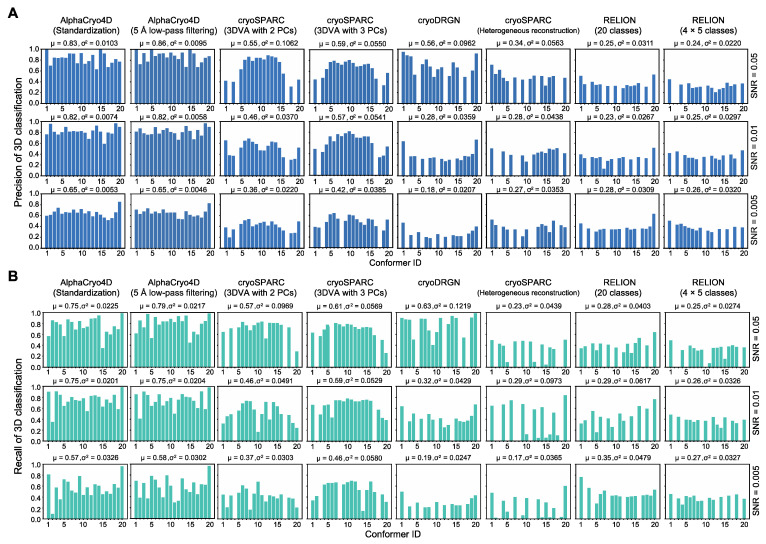Figure 3.
Performance comparison of AlphaCryo4D with alternative 3D classification methods using the simulated heterogeneous NLRP3 datasets of different SNRs. (A) 3D classification precision of the simulated datasets by AlphaCryo4D (first column), AlphaCryo4D preprocessed by 5 Å low-pass filtering instead of standardization (second column), 3DVA with two and three principal components (PCs) in cryoSPARC (third and fourth columns), cryoDRGN (fifth column), heterogeneous reconstruction in cryoSPARC (sixth column) and maximum-likelihood 3D classification in RELION (seventh column for directly classifying into 20 classes and eighth column for hierarchically classifying into four classes, each further sub-classified into five classes). (B) 3D classification recall of AlphaCryo4D in comparison to other methods. The recall of each state was calculated as the ratio of true positive particles in all ground truth particles. In all methods, the class number was set to 20. The results of SNRs of 0.05 (the first row), 0.01 (the second row) and 0.005 (the third row) are shown on three rows for side-by-side comparison. On the top of each panel, the symbols of and denote the mean and variance of precision, respectively, with the values of missing classes treated as zeros. In the maximum-likelihood classification of RELION, both direct and hierarchical strategies are compared in the study.

